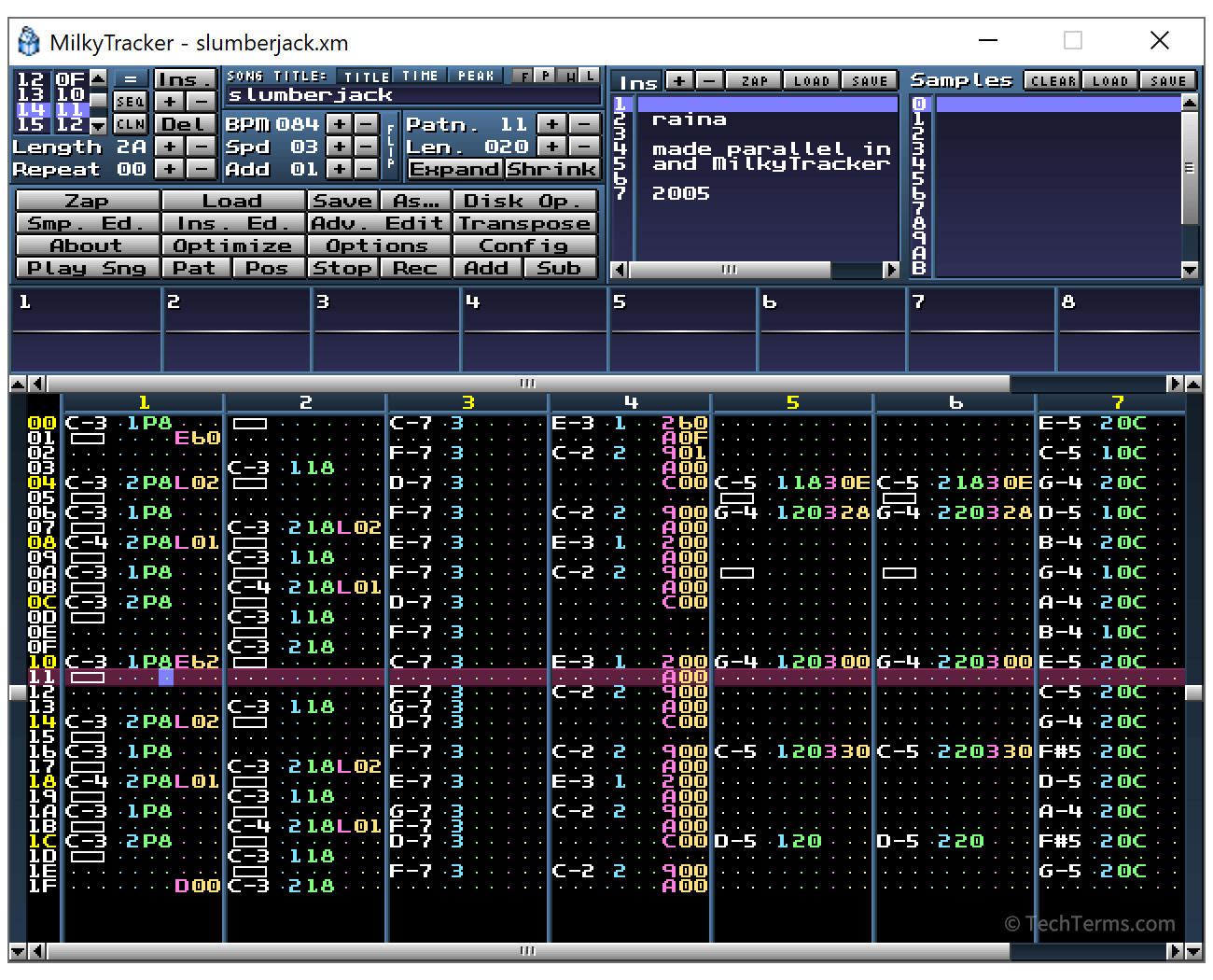Music Tracker
A music tracker is a type of music sequencing software for arranging digital music. It allows composers to create music using sound samples and synthesized instruments using text and numbers in a spreadsheet-like grid. While music trackers were most popular in the 1980s and 1990s, they are still used now by creators of chiptune music.
Unlike full-featured DAW applications, music trackers present musical information as text. Each column represents an audio channel, and each row represents a musical step. The text within each cell defines which sampled instrument to use, what note that instrument plays, and what modifiers to apply to that note (like pitch, volume, and audio effects). The resulting music file (known as a module file) contains only a few audio samples arranged and modified by text, so the file size of each module is smaller than a fully-recorded audio file.

Music trackers create a module file out of patterns. Each pattern is a distinct section of a song that a composer can use to assemble the final arrangement, repeating and rearranging them programmatically. For example, a module file for a standard pop song would have patterns for the intro, verse, pre-chorus, chorus, and bridge. The composer can set the intro pattern to only play the first time through, then cycle through the other patterns several times (or even continue to play endlessly). Video games often used module files for dynamic music that changed speed, added or removed instrumentation on the fly, or included distinct patterns for boss music in a single module file.
NOTE: Module files created by music trackers often use the .MOD or .XM file extensions.
 Test Your Knowledge
Test Your Knowledge